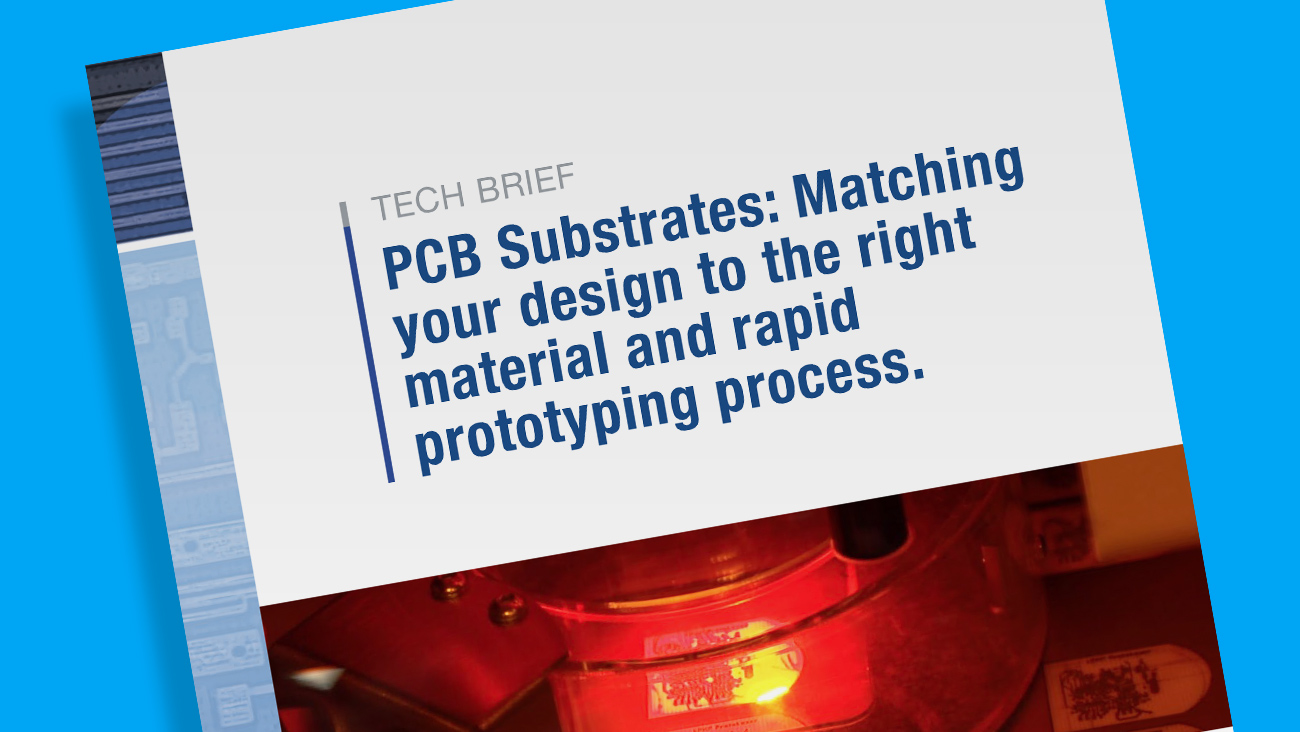
Tech Brief Provides Engineers a Quick Reference to PCB Substrates and the Material That’s Best Suited for their Circuit Designs
To stay ahead of the competition, PCB designers in RF/Microwave, wireless, IoT, and various other microelectronics and industrial fields must continuously evaluate the best new methods to produce efficient PCB circuits. While the list of potential PCB substrate materials is long, this Tech Brief focuses on a handful of top choices, which include flame retardant glass epoxy (FR4), polytetrafluoroethylene (PTFE), low-temperature co-fired ceramic (LTCC), aluminium nitride (AIN), aluminium oxide—aka alumina (Al2O3), flexible polyimide, and piezoelectric ceramics (PZT), from brands such as Rogers, Dupont, Ceramtech, Coorstek, and more. Each of these PCB substrates is popular for different reasons in different corners of the electronics industry. The Tech Brief also provides information and links to source the best PCB machines for consideration of rapid prototyping your circuit boards in-house. An understanding of how these machines work with the various substrate materials presents an opportunity for PCB designers to learn key design for manufacturability (DFM) tips, and how to iterate and innovate rapidly and effectively to create truly disruptive circuits.
Download the Tech Brief to learn more.


